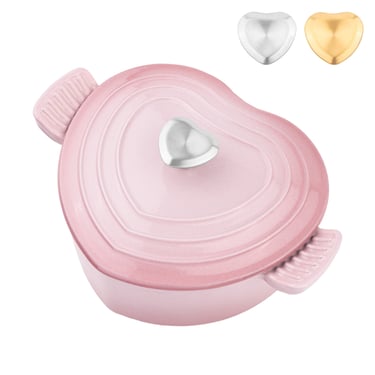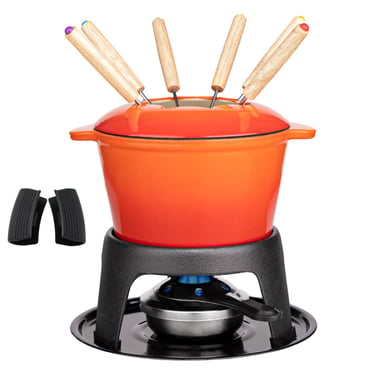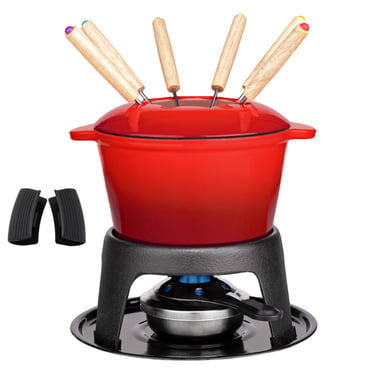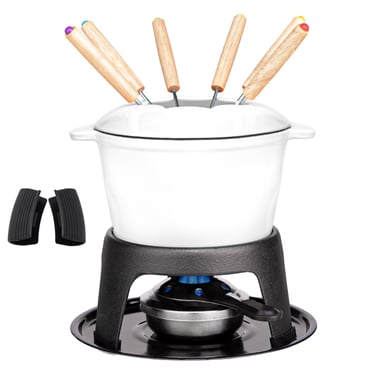Can You Use Cast Iron on an Induction Stove?
Yes, you can use cast iron on an induction stove! Learn why cast iron works perfectly with induction cooking, plus tips to protect your glass cooktop and get the best results.
KITCHEN
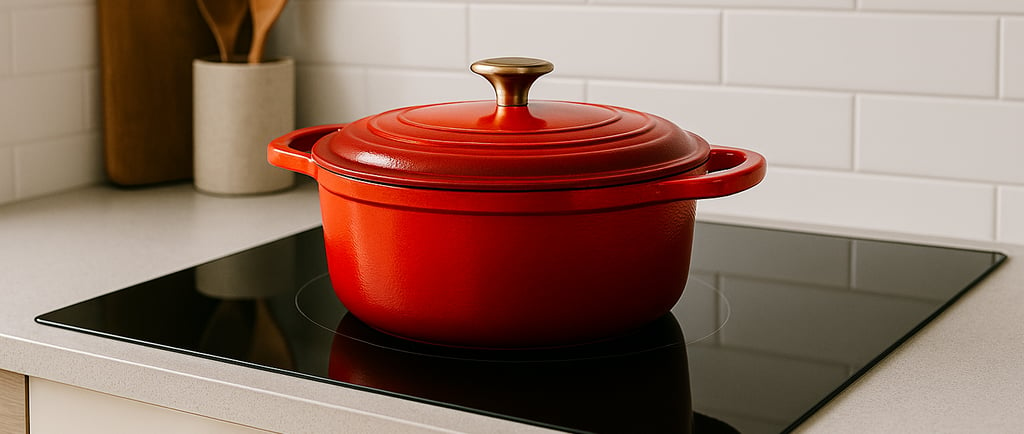

Cooking with cast iron has a timeless appeal—whether it’s the perfect sear on a steak or the slow simmer of a stew, cast iron cookware is built to last. But with the growing popularity of induction stoves, many home cooks wonder: can you safely use cast iron on induction?
The short answer: Yes, cast iron works beautifully on induction stoves. But there are a few important things you need to know to protect both your cookware and your stovetop.
Why Cast Iron Works on Induction
Induction cooking works by creating a magnetic field that directly heats your cookware, rather than the stovetop itself. This requires pots and pans made from magnetic materials like cast iron or stainless steel.
Since cast iron is naturally magnetic, it’s a perfect match for induction. In fact, many people love using cast iron on induction stoves because it heats quickly and retains heat incredibly well.
Benefits of Using Cast Iron on Induction
Here’s why cast iron and induction can be a dream team in the kitchen:
Excellent heat retention – Once hot, cast iron stays hot, making it ideal for searing meats.
Even cooking – The induction burner heats the entire base of the pan consistently.
Durability – With proper care, cast iron can last for generations, whether you cook on gas, electric, or induction.
Eco-friendly cooking – Induction is energy-efficient, and pairing it with long-lasting cast iron makes for sustainable cookware use.
Things to Watch Out For
While cast iron is perfectly safe on induction stoves, there are a few considerations:
Weight – Cast iron is heavy, and sliding it on a glass cooktop can scratch the surface. Always lift, never drag.
Flatness of the base – Older or warped cast iron pans may not sit perfectly flat, which can reduce induction efficiency.
Size matching – Make sure your cast iron pan isn’t too small for the induction burner; it needs to cover the magnetic field area to heat properly.
Surface protection – If you’re worried about scratches, place a thin paper towel or silicone mat between the pan and the cooktop. Induction heats through magnetic fields, so this won’t affect cooking performance.
Best Cast Iron for Induction Cooking
While any cast iron skillet or Dutch oven will technically work, some options are especially well-suited for induction:
Enameled cast iron Dutch ovens – Smooth bottoms protect your stovetop and are easy to clean.
Flat-bottom skillets – Better contact with the induction surface ensures even heating.
Modern cast iron brands – Some companies machine-smooth the bottoms for better compatibility with glass-top stoves.
So, can you use cast iron on an induction stove? Absolutely. Cast iron is one of the best cookware choices for induction cooking—durable, versatile, and capable of handling everything from searing to simmering.
Just remember to lift rather than slide, choose flat-bottom pans when possible, and consider enamel-coated cast iron for an even smoother experience. With the right care, your cast iron will be just as at home on an induction stove as it is over a campfire.
This post may contain affiliate links and I may receive a commission for purchases made through links.
Heart-Shaped Enameled Cast Iron Dutch Oven
2-Quart Casserole Pot with Lid - Compatible with All Cooktops
Click on the images to buy cast iron cookware

